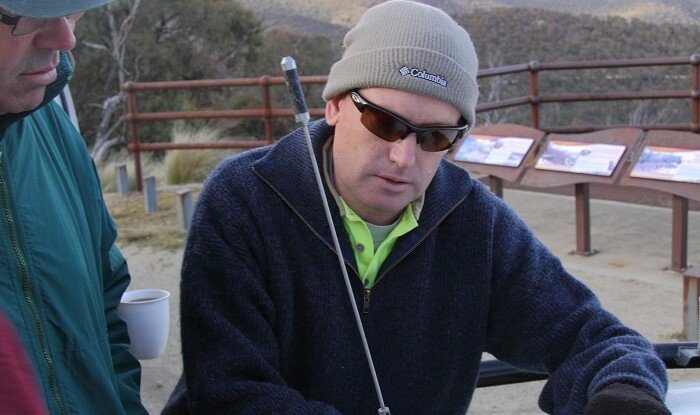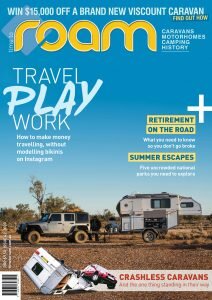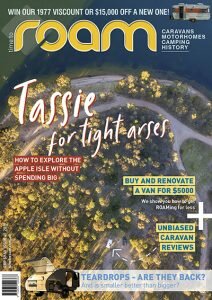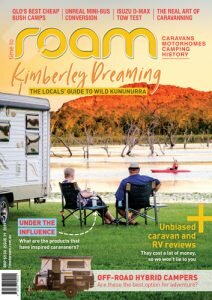Andrew Claridge grew up roaming Australia, leading to a fascination for wildlife and a remarkable career.
Most people who were forced to move around a lot as kids recall horror days trying to settle into new schools and make new friends.
Andrew Claridge has a different take on his nomadic childhood as his family moved from Tasmania to WA, then back across the continent to Victoria.
He says those early moves exposed him to the Australian environment, giving him a life-long thirst for knowledge about our unique nature.
“My father was a rolling stone and we travelled all the time and I love travelling today, as long as I’m on the ground and can take it all in.”
Doctor Andrew Claridge is regarded as one of the country’s foremost experts in creatures ranging from fungus to furs and even those with fins.
He’s had a 16-year career as an animal researcher with the NSW National Parks and Wildlife Service where today he’s a Senior Research Scientist.
“Every day I get to work with animals makes me elated. I don’t know why, but it is a good feeling and it keeps me alive.”
Subjects of his expert study include dingos, bandicoots, gliders, possums and quolls. He also knows a lot about feral animals like foxes and deer.
He’s most noted as an authority on how Australian mammals forage for native fungus. “The Hidden Life of Truffles”, a book based on years of research including his PHD, is just one of many works and papers published. Others titles include “Wildlife on Farms”, “How Forests Function” and pieces on bettongs, potoroos and musky rat-kangaroos.
It goes without saying, he’s the sort of bloke you could spend hours yarning with around a campfire without even having to get close to discussing politics or religion.
Andrew loves camping and being outdoors, especially fishing with his nine year old son.
“We only kill them if we need them for food. Otherwise we put them back.”As far as work goes however, camping has become somewhat obsolete.
He says wildlife study is increasingly becoming a “day job” thanks to infra-red digital cameras and other high-tech equipment.
“When I started out we used to trap animals, but now that we use cameras, the animals come and go as they please. It’s much more ethical, we get much better information and I’m not sitting in my tent worrying about the welfare of animals at night.”
What’s interesting about Andrew is his fascination for how different parts of the landscape interact, including how built and natural environments co-exist. This fascination is borne out in his nominated Top 5 destinations, several of which he selects because of the way the way the bush marries with the urban
environment.
“The major focus of my research work has been in south-eastern mainland Australia and even if you are travelling down the Hume Highway, there is a rich and varied biodiversity from Melbourne all the way to Sydney.”
He says a highlight of his work over the past decade was seeing how the bush recovered from the devastating fires of 2002-2003.
“Many of the places where I work were burned very badly. At first glance this was devastating to me. However, in time, all of these places have recovered to be fully functioning landscapes once again. While they’re not a mirror-image of what they were before, they are nevertheless diverse, vibrant and functioning.
The lesson I guess is that nature is ever-changing and has an innate resilience that we shouldn’t underestimate. We have to do as REO Speedwagon sang: “Roll with the changes…”
Andrew is proud of the fact Australians have had a growing appreciation for the environment in his
lifetime and welcomes everyone taking more of an interest in the nature around them.
“For the most part, leave places as you find. Be humble, be respectful and be observant. If you think that information might be important – for example, a sighting of a rare or unusual animal species, don’t feel your observations are trivial.“
Have wildlife info to share? Andrew recommends reporting online via the Atlas
of Living Australia: www.ala.org.au
My Top 5
1. Tarra-Bulga National Park, South Gippsland VIC
Andrew says; “The size of a postage stamp with spectacular diversity.” There are remnants of the once great forests that covered the region, with good road access for travellers. The park covers some of the best examples of original cool temperate rainforests of the Strzelecki Ranges.
Walk to the impressive Corrigan’s Suspension Bridge, which stretches through the rainforest canopy offering spectacular views of the fern gully below.
2. Ben Boyd National Park NSW
Andrew says: “An amazing place in south east Australia that still has wilderness qualities”.
As well as spectacular shorelines and lookouts, Ben Boyd also features the historic Green Cape Lighthouse and the Davidson Whaling Station Historic Site. Camping is available in the park. For caravan and RV travellers, there are three tourist parks in Eden, which is the most central place to use as a base to explore the region.
3. North and South Heads, Sydney Harbour NSW
“Sanctuaries in the middle of a metropolis, where you can still find a quiet place and get away from it all.” Easy to get to by public transport, take a picnic, find a sandstone rock shelf and spend the day taking in the spectacular views and watching the boats come and go.
4. The National Arboretum, Canberra ACT
“The bonsai collection is a particular favourite – it is a forest within a forest. Whoever came up with this idea should be congratulated. If you ever want to escape to a sanctuary, just get in there and breathe.”
The National Arboretum was established on land to the west of the city formerly used for pine forests which were destroyed in the 2003 bushfires. Opened in February this year, it is already becoming one of the national Capital’s ‘must see’ attractions.
5. Coles Bay and the Freycinet Peninsula, TAS
“Big granite boulders and breathtaking beauty.” An easy two and a half hour drive from Hobart, Coles Bay claims to have been the first town in the world to ban its shops using plastic bags. Hardly surprising given some of the nearby beaches including Wineglass Bay and the Friendly Beaches are rated as the best and most beautiful in Australia.
- Shows Cancelled amid COVID-19 Fears - 14 March 2020
- Windsor Caravans Now Does Motorhomes - 11 February 2020
- First Look – Frontline HiAce 6th Generation - 10 February 2020
- ACC Heading to Charters Towers - 5 February 2020
- New HiAce Frontline Camper Unveiled - 4 February 2020
- Should You Travel To Bushfire Affected Communities? - 12 January 2020
- Can Your Caravan Help After The Bushfires - 11 January 2020
- Why We Use Camplify And You Should Too - 29 October 2019
- Trakka Akuna Campervan – First Look - 24 October 2019
- Car and Caravan Weight Calculator - 11 October 2019




